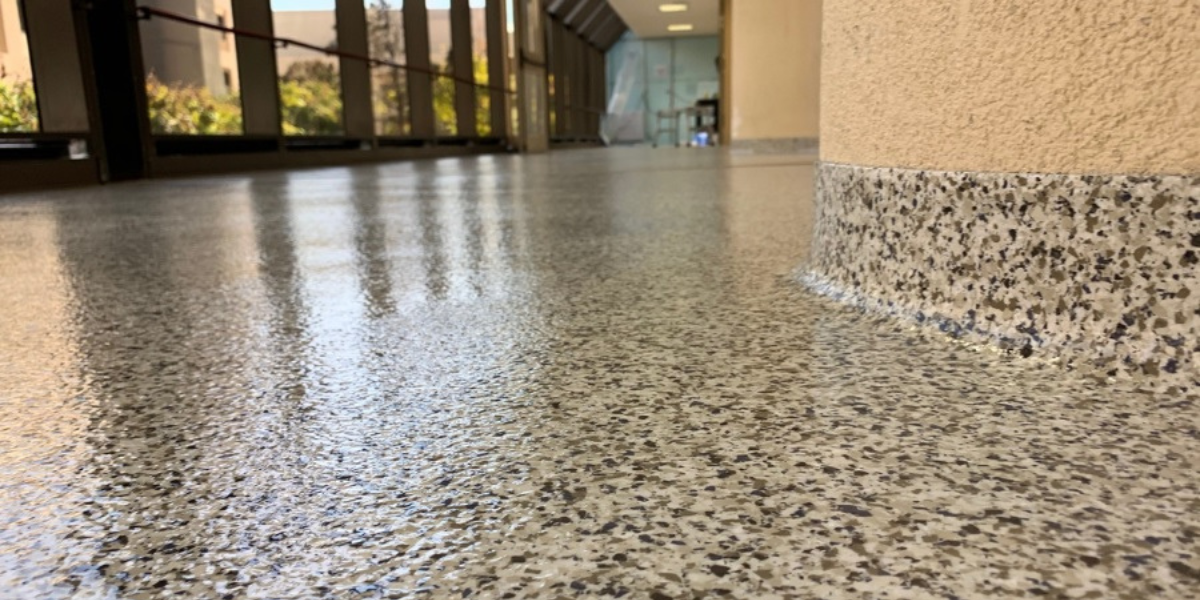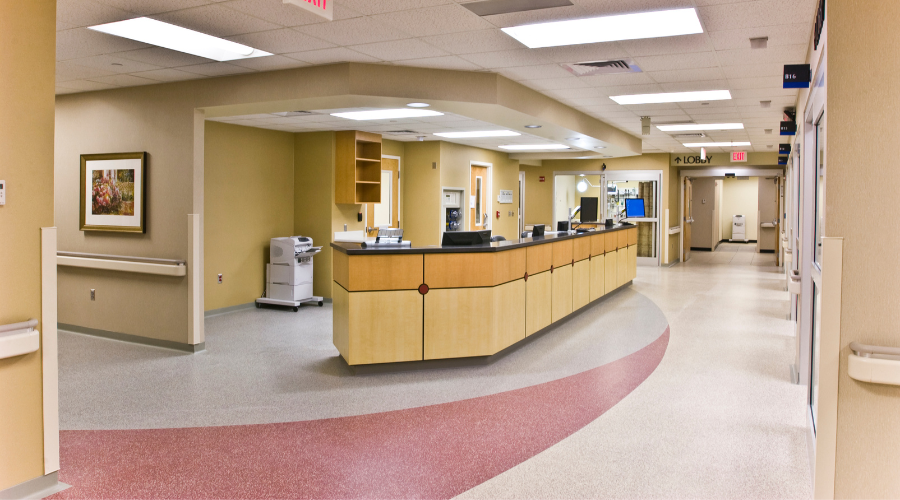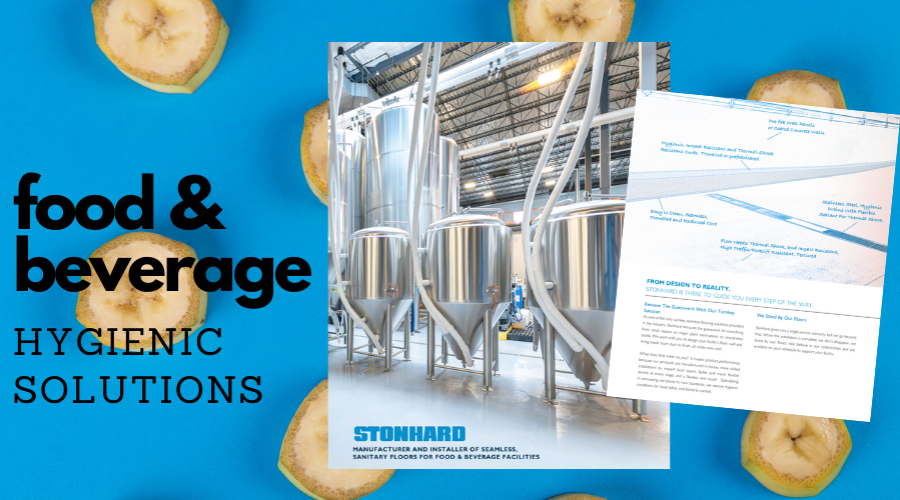Table of Contents:
Table of Contents:
There are a lot of terms that are gaining attention of late, one being antimicrobial. Antimicrobial is not a new thing. Understanding what things really mean can help you make the best choices when it comes to sanitary floors.
The term Antimicrobial was derived from the Greek words meaning “against little life; anti (against), mikros (little) and bios (life).[1] Antimicrobial denotes agents that act against microbial organisms. An antimicrobial is a substance, natural or synthetic that inhibits growth of microorganisms.
What Makes a Floor Hygienic?
Seamless, resinous floors are naturally hygienic, and antimicrobial for many reasons, including their inherent composition, maintenance and cleaning regimens, and the details you observe during product selection, system design and installation.
This is how Stonhard has always approached hygienic floors, for any environment from food processing to healthcare. We formulate our floor systems and we install them. Why is this important to you? Because you should know what kind of system you are investing in, and you should know who is installing it to ensure a long-term, safe solution. See below, Details and Installation.

The seamless floor in this dental office delivers a high standard of hygiene, resisting bacteria, stains, and harsh disinfectants with ease.
Understanding product composition
Resinous floors are dense and comprised of impervious composite materials from the surface to primed substrate, throughout the entire thickness of the matrix. This is significant because it ensures no voids, pores or capillaries to absorb or harbor bacteria, microbes or the water, organic materials, and nutrients necessary to promote their growth. This means comprehensive protection, not just at the surface.
Additionally, an impervious surface makes it easier to clean and facilitates a complete cleaning of the floor. This helps to maintain a sanitary environment.
The surface of a monolithic, or seamless floor is smooth. This smooth surface reduces the formation of biofilms and has no grout lines or joints, which present pathways for organic material, water and micro-organisms to find their way into a surface and stay there. Also, cleaning and disinfecting this type of floor is easier due to the lack of seams.
Durability and a high-performance characteristic also plays a role in a healthy and sanitary floor. A long-wearing, durable surface will stand up to heavy traffic, resist impacts and will not erode. A durable floor can withstand a constant flow of fluids, even from corrosive materials and hot or cold materials (withstands thermal cycling from extreme changes in temperature on the floor’s surface). Not all resinous floors provide all of these properties. You need to identify the right product for each environment considering features such as chemicals with which the floor will come in contact, how the floor is cleaned, and what equipment will stand or move upon its surface.
For chemical resistance, visit Stonhard’s Stonclad UT, UR, HT and Stonshield URT for food and chemical environments. See Stonres RTZ and STR for healthcare and other commercial spaces where cleaning and chemicals play a daily role. Our systems are resistant to a wide range of chemicals including:
- Organic acids commonly found in food processing environments as either ingredients or byproducts
- Acidic cleaners and de-scalers used to maintain stainless steel process equipment
- Alkaline cleaners used to remove oil, gum, wax and grease build up
- Oxidizers such as chlorine and hydrogen peroxide used to sanitize and sterilize surfaces
- Isopropyl and Ethyl Alcohol found in hand sanitizers and sanitizing cleaners
Should I Use An Antimicrobial Additive?
An antimicrobial additive can be incorporated on-site to increase the level of sanitary protection. While it supports sanitary design by enhancing a system, it is not a stand-alone product, nor is it a substitute for cleaning and sanitizing a floor to prevent growth and spread of bacteria and microbes. It is an additive that end users, decision makers, planners, architectural and engineering firms can opt to incorporate into a poured-in-place, resinous floor. While anti-microbial additives help to protect against the growth of microbes, they do not kill bacteria on contact. If considering using an antimicrobial additive be sure to investigate the claims and the ingredients.
Stonhard offers Stonplus PROTECT, an EPA-registered and proven effective antimicrobial ingredient which can be incorporated into most of Stonhard’s flooring products to provide additional protection against growth of microbes.

A seamless cove base enhances hygiene by eliminating corners and crevices where dirt and bacteria can accumulate.
Details and installation influence delivery of a hygienic floor
Details during installation are critical to providing a hygienic floor solution. Installation should be done by trained applicators, and the company responsible for your floors should conduct a final walk-through after the installation. Resinous floors are a long-term investment, not a quick fix. Installation details to be considered are:
- Pitch and drainage to prevent pooling or collection of liquids on the floor surface, especially in food processing facilities
- Integral transition between floor and wall using a troweled cove base to form a seamless transition between the floor and wall
- Prevents intrusion of fluids and contaminants at the floor/wall interface
- This vertical transition, if not designed and executed properly, represents an easy place for entry behind and beneath the floor surface and can be very difficult to clean and sanitize
- Transitions between floor and drains, cleanouts, service chases and penetrations
- These transitions must be designed and treated so that fluids will flow properly toward the drain or away from the penetration (to facilitate removal)
- Also must be addressed to ensure a void-free and maintainable transition that does not separate during cleaning or service even under hot washdown or chemical sanitizing
- Surface texture that provides a balance between cleanability and the safety of those who work on the floor
- Operating conditions in the area (wet, dry, dusty, etc.)
- Activities in the area (processing, packaging, transport, medical procedures)
- Footwear personnel activities in the area (walking, standing, pushing, lifting, etc.)
There is a lot to discern regarding sanitary design and hygienic environments. Understanding products and not getting caught up in the buzzwords helps us all to make the smartest and safest decisions for the environments we are in.
About Stonhard
Stonhard is the unprecedented world leader in manufacturing and installing high-performance polymer floor, wall and lining systems. Stonhard maintains 300 territory managers and 200 application teams worldwide who will work with you on design specification, project management, final walk-through and service after the sale. Stonhard’s single-source warranty covers both products and installation. Contact us to learn more about our precision installation methods and specialized products.
Related Articles
Loving this Content?
Subscribe to upcoming topics!











